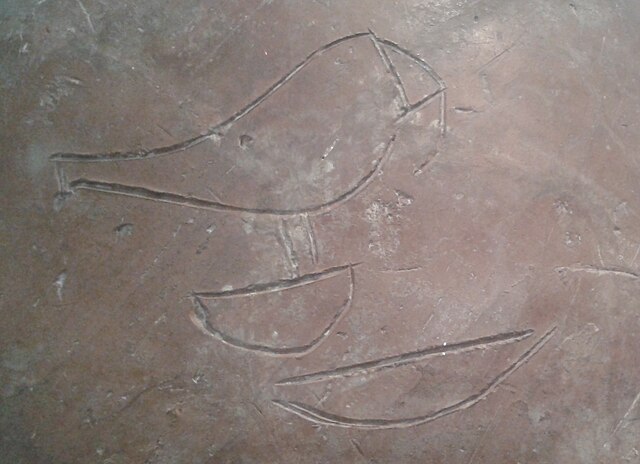Khnum, also romanised Khnemu, was one of the earliest-known Egyptian deities in Upper Egypt, originally associated with the Nile cataract. He held the responsibility of regulating the annual inundation of the river, emanating from the caverns of Hapy, the deity embodying the flood. Since the annual flooding of the Nile brought with it silt and clay, and its water brought life to its surroundings, he eventually became known as the creator of human bodies and the life force kꜣ ("ka"). Using a potter's wheel and clay, he fashioned these entities and placed them within their mothers' wombs. Often, his creative endeavors were overseen by another god. He was later described as having moulded the other deities, and was revered as the creator of the animal kingdom.
Remains of the temple house of the Khnum Temple on Elephantine Island in Aswan, Egypt
Khnum on the right with Menhit on the left, shown on the outside wall of the temple at Esna
At the Temple of Esna, Emperor Tiberius is depicted led by the deities Buto and Nekhbet to Khnum.
Khnum (left) fashions the god Ihy (middle) on a potter's wheel, with the help of the goddess Heqet, Dendera Temple.
Upper Egypt is the southern portion of Egypt and is composed of the Nile River valley south of the delta and the 30th parallel N. It thus consists of the entire Nile River valley from Cairo south to Lake Nasser.
Image: Iry Hor name
Image: Ka vessel
Image: Kingscorpion







